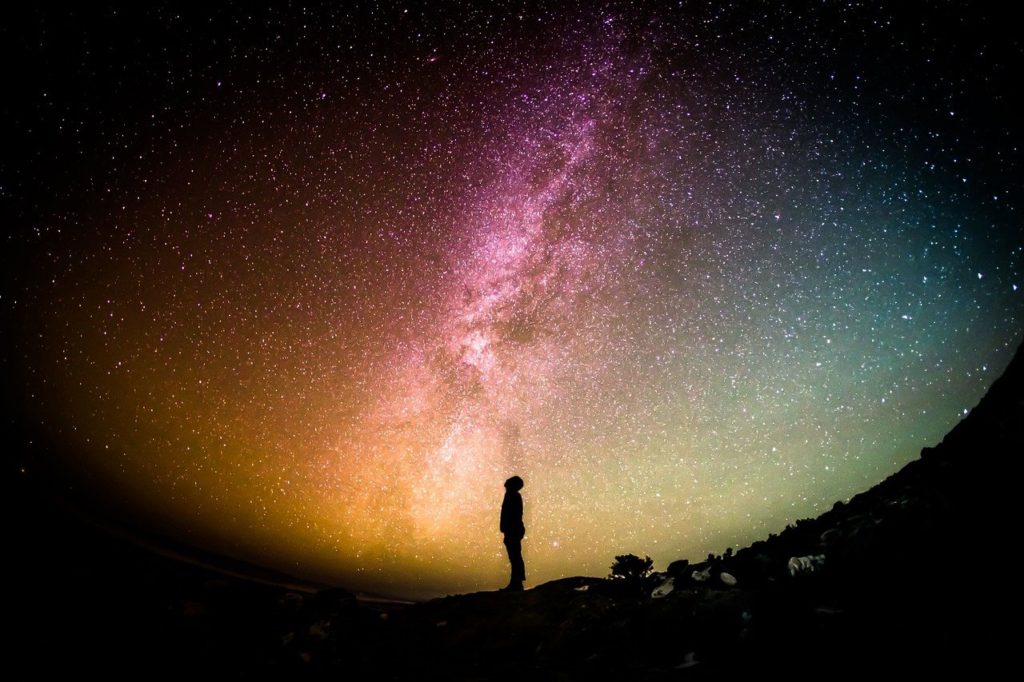And G-d Saw That It Was Good

Last week I read the notice on Rabbi Lord Jonathan Sack’s website. He is in need of a refuah, and so on Shabbat I sat together with my daughter, and we learned a bit from his book on Genesis for a refuah shleimah for HaRav Ya’acov Tzvi ben Leah. And there is one profound insight from the learning that keeps circling around in my head.
Rabbi Sacks wrote that as beings created in the image of G-d, we are able, in our limited, human way, to reflect the creativity of Hashem. Just as Hashem created the world, we are challenged to create our own personal world. And we are instructed, says Rabbi Sacks, to use the same method to create our personal world that Hashem used to create the world as a whole.
What was the method through which Hashem created the world? It was a three-step process. First, Hashem used speech to create. For example, “And He said, “Let there be light.” We too, are instructed to use our ability to speak and our ability to reason to shape our world. The second step is bringing our thoughts and ideas into reality. After Hashem says, “Let there be” the Torah then records, “and there was.” Thought and speech alone is never enough.
And then there is the third step. “And G-d saw that it was good.” It is this third step, the one that doesn’t, at first glance, seem to be necessary at all, which I’ve been thinking about so much. Why did Hashem need to look at what He created, and see that it was good?
Rabbi Sacks says that the ability to see and engage with the good in our imperfect world is an intrinsic part of the creation process. The ability to see good is a way of giving birth to that good as a reality in our world. When we see the good in someone else, when we believe in them, we help them to live that good. When we see the good in our world, our world becomes an expression of that good.
Rabbi Sacks’ explanation of this third step resonated strongly with me in our new, Carona-infused world, where all of us have been called on to recreate our world in ways we didn’t imagine and in circumstances that we consider, to put it mildly, less than ideal. Some days, we manage to accomplish amazing things in the circumstances. And then there are the other days, the days where we are just trying to make it through. The days when we aren’t really seeing the good.
Did you know that the original creation process, according to our Sages, was not entirely smooth sailing either? Rashi points out that in Bereisheit 1:11 Hashem asks the earth to produce fruit trees bearing fruit, meaning trees whose trunk and bark tasted like fruit, which also made fruit. Nevertheless, in the very next verse, we see that the earth simply made regular tasting trees whose fruit tasted like fruit. Even so, the end of pasuk 12 reads, “and G-d saw that it was good.”
The message is that to really create in this world, we have to see and accept that our messy, imperfect world, and our messy, imperfect selves, are good. We create good by seeing good.
There are two ways that we can put this into action. One I learned from one of my closest friends. She has the habit, which she maintains even in the most difficult of circumstances, of asking each of her children at the end of the day to share with her three good things. This habit has always had a special place in my heart, but it wasn’t until I read this piece of Torah from Rabbi Sacks that I realized the profundity behind this sweet and simple part of her bedtime routine. When we take the time to spell out three good things about our day, when we recognize three good things in our world, we create a world that is good enough to hold three good things. We create for ourselves a good world to live in.
I learned another aspect of this concept from my good friend and teacher, Mrs. Racheli Miller. She taught me how valuable it is, at the end of the day, not just to go over what we might have done wrong, but also to see and validate what we have done right. And yes, even if we didn’t do everything right, all the things we did do right still count! We can find not just three ways, but ten ways in which we expressed our tzelem elokim, our internal goodness, through our actions during the course of the day. Being able to see the goodness in ourselves and in the people around us changes our world. Seeing the good creates more of that good in ourselves and the people around us.
These are two ways I thought about really living with this profound idea. We can take the time with ourselves or with our children, to find three good things that happened during the day, and three good things we did during the day. We can do it for the purpose of forming a personal world that expresses good. In this way we can reinforce the idea, in ourselves and in our children, that we are good people in a good world.
Have you ever used these methods? Did they work for you? Are you thinking of other ways to put this idea into action? I would love to hear about it!

